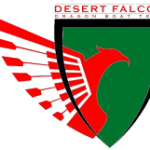Picture this: Twenty paddlers, one drummer, and a steersperson, all working in perfect harmony as their boat slices through the water. This is the essence of dragon boat racing, a sport that embodies the true spirit of teamwork and synchronization. As a fitness enthusiast who’s been part of a dragon boat team for years, I can tell you that the thrill of moving as one unit is unparalleled.
The Heart of Dragon Boat Racing: Team Dynamics
At the core of every successful dragon boat team lies a delicate balance of individual strength and collective rhythm. It’s not just about who can paddle the hardest; it’s about who can paddle together the best.
Synchronization: The Make or Break Factor
Imagine trying to push a car with your friends, but everyone pushes at different times. Frustrating, right? That’s what happens when a dragon boat team is out of sync. When everyone paddles in unison, however, the boat glides effortlessly, almost as if it’s flying across the water. To learn more about synchronization and how it affects performance, check out our article on Dragon Boat Team Synchronization: Key to Success in Racing and Performance.
Pro Tip: Focus on the person in front of you. Match their timing, and you’ll naturally sync with the rest of the boat.
Communication: The Silent Symphony
In the heat of a race, verbal communication is nearly impossible. That’s where non-verbal cues become crucial. A slight nod, a change in breathing pattern, or even the tension in a teammate’s shoulders can convey volumes of information.
Training for Perfection: Drills and Exercises
Rhythm Exercises: Finding Your Collective Beat
One of our favorite drills is the “Eyes Closed Paddle.” Here’s how it works:
-
Start with a slow, steady pace
-
On the coach’s signal, everyone closes their eyes
-
Continue paddling, relying only on the sound and feel of your teammates
It’s challenging at first, but it dramatically improves your sense of timing and connection to the team.
On-Land Simulations: Perfecting Form Without Water
Who says you need a boat to practice dragon boating? On-land simulations are excellent for honing technique and building team synchronization.
Improving your form and timing on land can make a huge difference on the water. For expert tips on improving your paddle stroke, head over to our post on Mastering the Dragon: Expert Tips for a Powerful Paddle Stroke.
Building core and arm strength is crucial for powerful paddling. Use these Fitness Resistance Bands to enhance your strength training and improve your paddling performance.
While practicing on land or heading to the water, keeping your paddle safe and secure is important. Check out this Dragon Boat Paddle Gear Bag for easy transport and protection.
Building Bonds Beyond the Boat
Team dynamics aren’t just about what happens on the water. The strongest teams are those that connect on a personal level too.
Team Bonding Exercises: Strengthening Connections
One of our team’s favorite bonding activities is the “Trust Fall” exercise. It might seem cliché, but there’s nothing like literally putting your safety in your teammates’ hands to build trust.
Bonus Tip: Organize regular team dinners or outings. The conversations and laughs shared over a meal can translate into better understanding and communication on the boat.
The Ripple Effect of Synchronization
When a dragon boat team achieves perfect synchronization, it’s more than just a faster boat. It’s a feeling of unity, of being part of something greater than yourself. This sensation can spill over into other areas of life, improving teamwork skills in professional settings and fostering a sense of community.
Ready to experience the thrill of paddling in perfect harmony?
Find a Dragon Boat Team Near You!
Remember, in dragon boat racing, as in life, we’re stronger





Pingback: Thrilling First Day at Shangri-La Abu Dhabi Dragon Boat Festival: Desert Falcons and Damen Teams Shine - Desert Falcons Dubai
Pingback: Day 2 Recap: Desert Falcons-Damen Continue to Impress at Shangri-La Abu Dhabi Dragon Boat Festival - Desert Falcons Dubai
Pingback: Desert Falcons-Damen Featured in Damen Services Newsletter! - Desert Falcons Dubai